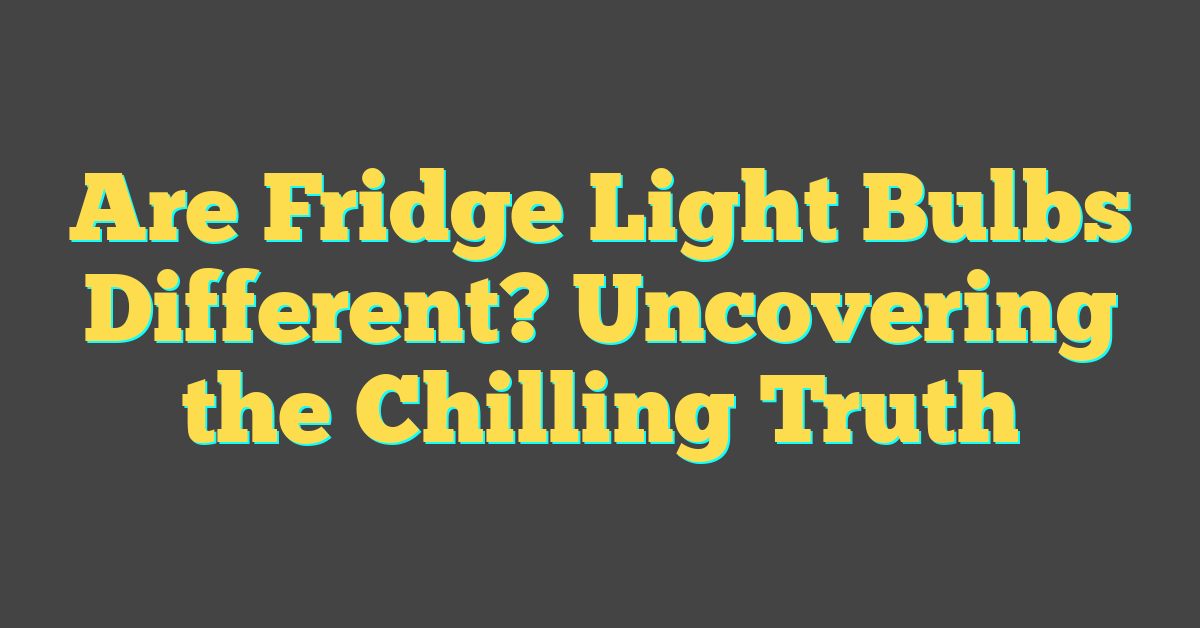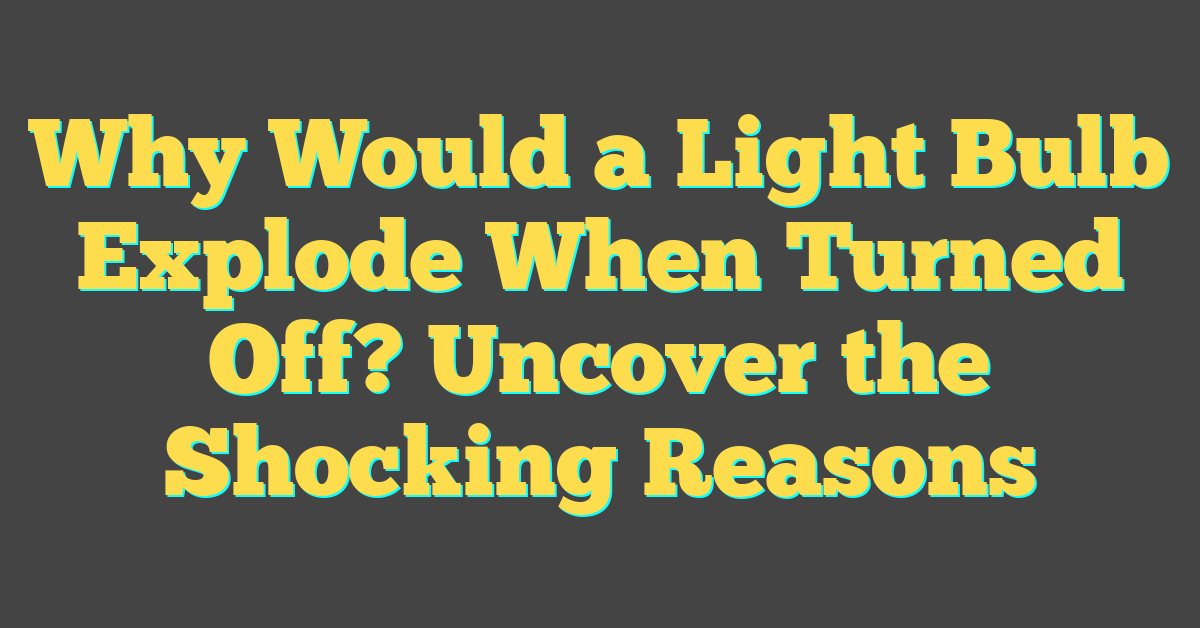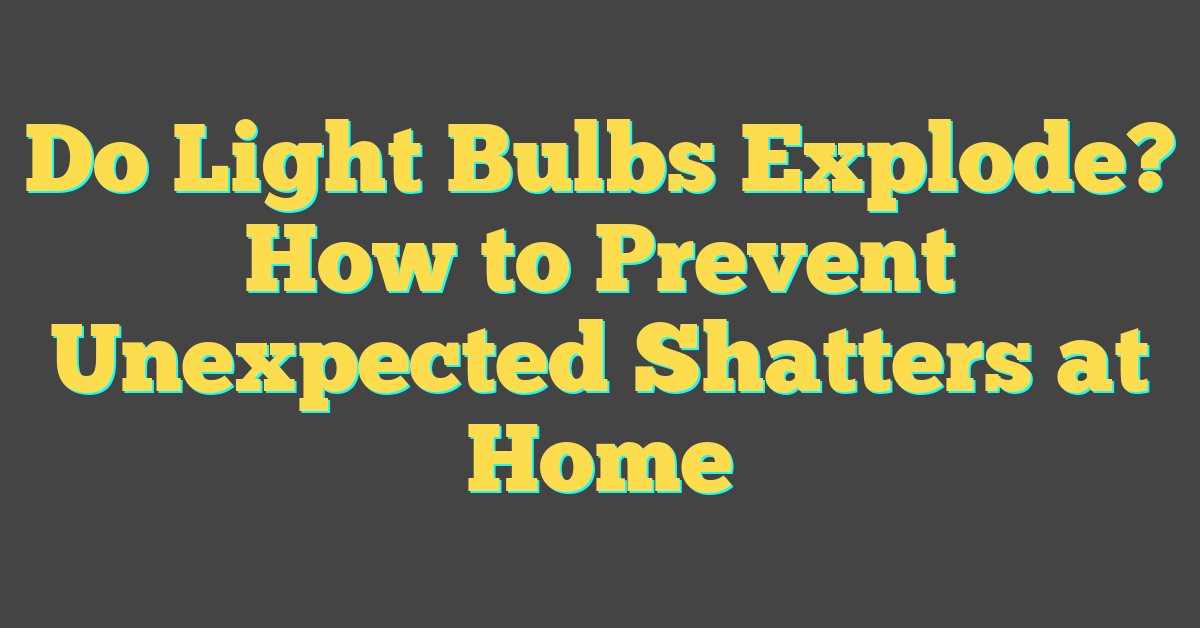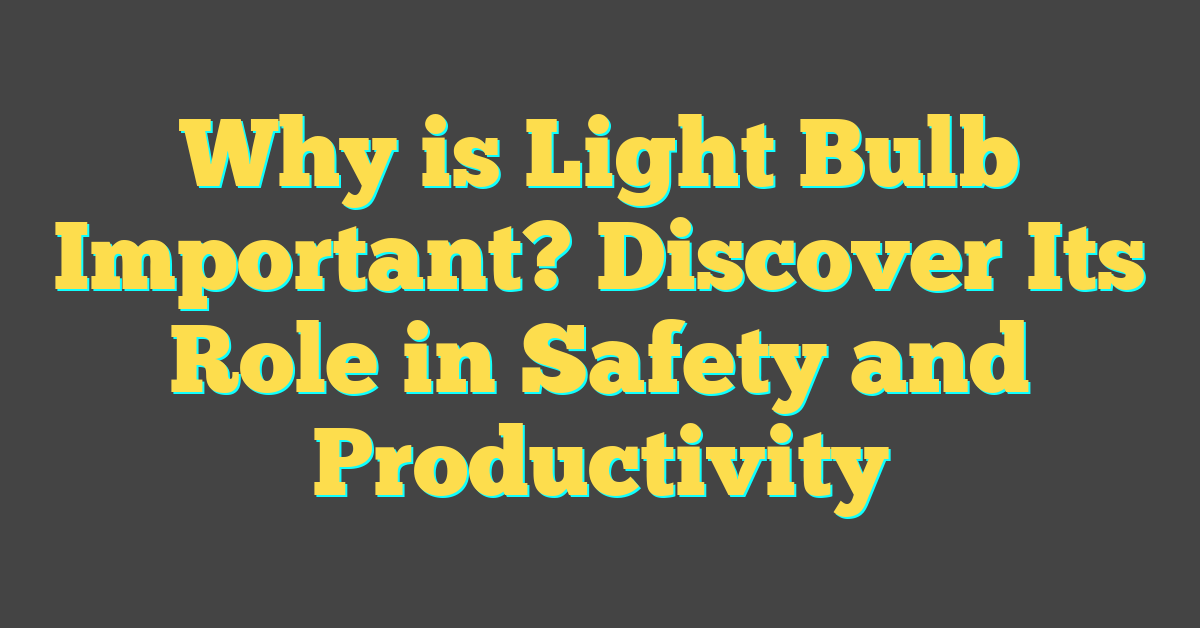LED light bulbs have revolutionized the way you light up your home. They’re energy-efficient, long-lasting, and touted as the future of illumination. But like any technology, they’re not without their quirks.

You might’ve heard some rumblings about LED bulbs. Flickering, dimming issues, or even health concerns—these topics pop up in discussions and might make you wonder if there’s a problem with these high-tech lights.
Before you decide to go all-in on LEDs or dismiss them entirely, it’s worth exploring what these issues really are. Are they deal-breakers, or just bumps on the road to a brighter, greener future? Let’s shed some light on the situation.
The Benefits of LED Light Bulbs
Energy Efficiency stands out as the flagship advantage of LED bulbs. You’re not just lighting up your home; you’re embracing technology that uses at least 75% less energy than traditional incandescent bulbs. In fact, swapping out your old bulbs for LEDs is akin to cutting down on your carbon footprint — you’re doing your bit for the environment, one bulb at a time.
Longevity is another hallmark of LED light bulbs. Imagine installing a bulb and not having to worry about replacing it for years. That’s the promise LEDs offer. On average, these bulbs can last up to 25 times longer than their incandescent counterparts. Here’s a quick breakdown:
| Bulb Type | Average Lifespan (Hours) |
|---|---|
| LED | 25,000 – 50,000 |
| Incandescent | 1,000 – 2,000 |
Empowering your DIY home projects with LEDs means fewer trips up the ladder for bulb changes.
The versatility of LEDs cannot be overstated. Whether you’re aiming for a warm, cozy ambiance or a bright, focused task light, these bulbs can deliver. Moreover, LED lights offer a broad color spectrum, so you can customize your lighting to match your mood or the season — all without compromising on energy savings.
LEDs are more than just practical; they’re safe. They emit very little heat, which reduces the risk of burns or fires. This is particularly important if you love crafting DIY lighting projects. You want lights that are as safe as they are functional.
Most of us are on the lookout for ways to reduce monthly expenses. Cost Savings is where LEDs shine bright. Despite a higher upfront cost compared to traditional bulbs, LEDs save you money in the long run due to their energy efficiency and long lifespan.
By incorporating LED technology into your home, you’re setting the stage for a future where lighting is not only cost-effective and long-lasting but also highly customizable to fit your every need. Whether it’s retrofitting old lamps or installing smart lighting systems, you’re placing yourself at the forefront of a lighting revolution.
The Rise of LED Technology

With the dawn of the 21st century, you’ve watched as LED technology has soared from a promising futuristic concept to a dominant force in the lighting industry. If you’re fascinated by the pace of innovation in your home DIY projects and the world of lighting, tracking the ascent of LEDs is like following an exciting saga where the hero keeps getting stronger.
LEDs (Light Emitting Diodes), which once played a minor role, often used in electronic devices for those tiny blinking lights, have now taken center stage. In the early days, the cost of LEDs was a barrier for average consumers, but as technology advanced, prices began to drop significantly. This shift wasn’t just economic; it was revolutionary. You suddenly found LEDs in a plethora of shapes, sizes, and colors suited for all your DIY aspirations.
Consider the numbers that spotlight the rise of LED lighting:
| Year | LED Market Penetration |
|---|---|
| 2010 | Less than 5% |
| 2015 | Approximately 40% |
| 2020 | Over 60% |
This rapid market penetration is a testament to LED’s growing appeal. With your keen interest in home improvement and energy savings, you likely know by now that LEDs offer remarkable advantages over their incandescent and fluorescent predecessors.
« How Big Are Light Bulbs? Discover Sizes That Transform Spaces
Does It Matter What Kind of Light Bulb? Discover the Impact on Your Home »
What most people often don’t realize is the versatility of LEDs that goes beyond mere illumination. Their application reaches into fields like agriculture with grow lights, in medicine for phototherapy, and even in communication with applications such as Li-Fi, which uses light to transmit data wirelessly.
As technology marches on, you are witnessing a changing landscape in your home lighting and beyond. With LED technology, you’re not just replacing a bulb; you’re upgrading to a smarter, more adaptive way to light up your world. The question isn’t why should you adopt LED technology. It’s why haven’t you already?
Common Issues with LED Bulbs

LED bulbs are a game-changer in the world of illumination, offering a leap forward in energy efficiency and versatility. But while they outshine traditional lighting options in many respects, they aren’t without issues. Here’s what you need to be aware of when using LED bulbs.
Dimming Difficulties are common when using LEDs. Unlike incandescent bulbs, LEDs require compatible dimmer switches to operate correctly. If you find your LED bulbs flickering or not dimming as expected, it’s likely due to an incompatible dimmer switch. Ensure you use a dimmer that’s specifically labeled as LED-compatible to avoid this issue.
Color Consistency can sometimes fall short. When creating the perfect ambiance, you’d expect your LED bulbs to emit a uniform color. However, slight variations in manufacturing can lead to color disparities between bulbs. Stick to the same brand and model for all the bulbs in a single space to minimize the chances of mismatched lighting.
Moving on to Heat Build-up, it’s a lesser-known fact that despite running cooler than traditional bulbs, LEDs can still generate significant heat at the semiconductor junction. Poor heat dissipation can shorten the bulb’s lifespan. Ensure your LED bulbs have proper ventilation and aren’t enclosed in tight fixtures to mitigate this risk.
Compatibility with Existing Infrastructure also poses challenges. Sometimes, older electrical systems and fixtures aren’t designed to work with the low wattage draw of LED bulbs. This might require an electrical upgrade or at the very least, a check to ensure compatibility before making the switch to LED.
Lastly, Price can be a barrier for some. Although LED bulbs save money in the long run due to lower energy consumption and longer lifespans, the initial cost can be higher than traditional bulbs. But don’t let sticker shock deter you—consider it an investment in your home’s energy efficiency.
LED technology is evolving, and many of these issues are being addressed by manufacturers. Stay informed on the latest LED advancements to fully benefit from this revolutionary lighting solution.
Flickering and Dimming Problems

LED lights, while notably efficient, do come with their own set of quirks. Flickering and dimming troubles often top the list of consumer complaints. You might have noticed that when you try to create that perfect ambiance, your LED bulbs often have different ideas about the mood you’re trying to set. It’s annoying, to say the least. But what causes this erratic behavior?
Typically, flickering arises due to incompatibility between the LED driver and the dimming mechanism. Traditional dimmers are designed for the high electrical loads of incandescent bulbs, and when paired with the lower power requirements of LEDs, they fall out of sync. This mismatch can lead to a strobe-like effect that more closely resembles a rave than a relaxing evening at home.
You’d think dimming would be straightforward, but with LED technology, it’s a bit more complex. The good news is that newer LED-specific dimmers have hit the market, and they talk the same language as your LEDs. These specialized dimmers modulate the power delivered to the bulb, providing a much smoother transition from bright to dim and back again.
If you’re facing these issues, you’re not alone. Remember these tips:
- Check if your dimmer switch is compatible with LED technology.
- Consider replacing outdated dimmers with LED-rated ones.
- Ensure your LED bulbs are labeled “dimmable.”
- If you’re using smart LEDs, verify that your hub’s software is up to date.
Another challenge to keep in mind is the minimum load requirement of dimmers. Many LED bulbs don’t draw enough current to meet the threshold, leading to flickering or failed dimming. Manufacturers are constantly working on solutions, so it’s worth keeping an eye on newer models and innovations that promise to eliminate these headaches.
Don’t let a little flicker deter you from your quest for the perfect lighting. With the right equipment and a touch of patience, you’ll find your ideal LED setup that not only saves energy but sets the stage for your next cozy night in or DIY project.
Health Concerns with LED Lighting
When you flip the switch in your home, you’re probably not pondering the health impacts of the bulb that lights up your room. Well, it’s time to shed some light on the subject. Despite the numerous perks that LED bulbs offer, there are concerns that frequent exposure, particularly to the blue light emitted by LEDs, may have health implications.
Blue light has been a buzzword associated with screens, but LED bulbs also contribute significantly to your daily blue light exposure. This wavelength can disrupt your natural circadian rhythm by suppressing melatonin production, hence interfering with your sleep cycle. And when your beauty sleep is on the line, you’re right to raise an eyebrow.
Another point to consider is the stroboscopic effect, a less-talked-about aspect of LED lighting. Imperceptible flickers can occur with certain LEDs, posing a potential hazard as it can lead to eye strain, headaches, and in extreme cases, may even trigger photosensitive epileptic seizures.
For the DIY enthusiasts or light-connoisseurs out there, you might know about the glare. High-intensity LEDs without proper diffusion can create a harsh glare uncomfortable to the eyes. Sure, you love lighting up those nooks and crannies of your home projects, but you’ve also encountered that moment of squinty discomfort.
And let’s touch on color temperature. Those cool white LEDs might look sleek and modern, but did you know that higher Kelvin lights have been noted to cause more discomfort and are often less conducive to relaxation compared to warmer tones?
Demystifying the Issues
You’ve probably heard some discussions around LED bulbs raising a few eyebrows, and as a DIY enthusiast and lighting expert, it’s essential to shine a light on the realities behind these concerns.
Firstly, dimming complications can be a frustration. If you’ve ever installed a dimmer switch, only to have your LED bulbs flicker or not dim properly, it’s not just you. The root of the problem usually lies in the bulb not being compatible with traditional dimmers. Manufacturers have come up with dimmable LEDs, but remember, you’ll need the right kind of dimmer to match.
Color consistency is another hot topic. Whether you’re painting your living room or setting up mood lighting, you don’t want variation in color from one bulb to the next. This problem, termed ‘color binning,’ used to plague early LEDs. Nowadays, strict manufacturing standards ensure that the white light you buy today will match the replacement you buy tomorrow.
Now let’s tackle heat build-up. Unlike incandescent lights, LEDs don’t produce much heat. However, any heat they do generate remains within the unit, potentially shortening lifespan if not properly managed. The solution? Heat sinks. These clever designs dissipate heat and help sustain your LEDs’ longevity.
Then there’s the elephant in the room: initial costs. Sure, LEDs have historically been pricier at the checkout. But when you factor in their lower energy consumption and longer lifespans, they’re clear winners in the long run. Look at it as an investment into your home’s efficiency.
Lastly, compatibility concerns. It’s true that early LEDs had some issues fitting into old fixtures or working with existing systems. But as LED technology has advanced, they’ve become far more adaptable, fitting into a wide array of settings from the get-go. This plug-and-play mentality is essential for those of us who love to tinker with home lighting without the hassle.
Remember, as with any technology, evolution is key to overcoming these issues. Through continued innovation and feedback from hands-on users like you, LED technology is not just the future of lighting—it’s here to brighten our present.
Conclusion
You’ve seen that while LED bulbs come with their fair share of issues, the future is bright for this energy-efficient technology. Sure, there are kinks to iron out, but that’s just part of the process. As you continue to swap out old bulbs for LEDs, remember that every bit of feedback helps manufacturers fine-tune their products. So keep an eye on those advancements and rest assured that you’re part of a lighting revolution that’s only going to get better. Embrace the change and enjoy the glow of progress!
Frequently Asked Questions
What are common issues with LED bulbs?
LED bulbs can experience problems like dimming difficulties, inconsistent color outputs, heat build-up, and compatibility issues with older lighting infrastructure. They may also have a higher upfront cost compared to traditional bulbs.
Can LED lighting affect health?
Yes, LED lighting can impact health by disrupting sleep cycles with blue light exposure, potentially causing eye strain and headaches due to the stroboscopic effect, and creating discomfort from harsh glare and cooler color temperatures.
Are manufacturers dealing with LED bulb issues?
Manufacturers are actively working on improving LED technology to address various issues such as dimming compatibility, consistent color output, efficient heat management, and better integration with existing fixtures and systems.
Is it true that LED bulbs have compatibility issues with dimmers?
Yes, some LED bulbs may not be compatible with traditional dimmers, but advancements are being made to ensure that newer LED bulbs work with a wide range of dimming systems.
Do LED bulbs always cost more upfront?
While LED bulbs typically have a higher initial cost compared to traditional bulbs, their long-term savings on energy and replacement costs can compensate for the initial investment over time.
Can LED bulbs match the color consistency of traditional bulbs?
LED technology is evolving, and newer LED bulbs offer improved color consistency that can rival or exceed the performance of traditional bulbs.
How are LEDs addressing heat build-up issues?
LED bulbs are designed with heat sinks and other cooling mechanisms to effectively manage heat build-up, which extends their life and maintains efficiency.
Will LEDs eventually replace traditional lighting?
With continuous innovation and improvements, LED technology is well-positioned to become the dominant lighting solution of the future, potentially replacing traditional lighting.




